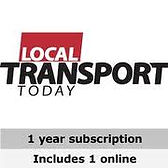The road safety industry does more harm than good
Keith Peat
18 September 2015
Before addressing the remarks of Anna Semlyen on road safety (‘We don’t tolerate carnage on the railways, so why is it accepted on the roads?’ LTT 4 Sep), may I say that my goal is for genuine, not profit or ideologically-based road safety and driver prosecution and the over-slowing of essential UK infrastructure. Best road safety will never be achieved on a for-profit basis or on the aspirations of ideologists with no CV in the subject.
Our current road safety policy is entirely based around a multi-billion pound road safety industry, and most of that money actually prevents not one single accident. On the contrary, because the focus is on profiteering via too many tax break charities with agendas other than road safety, a sector that hosts Anna by the way, we are probably killing people because the focus is not on real accident causes.
In my view, because road safety has merely evolved piecemeal for over a century, it is now totally irrelevant and we have a Highway Code that is hopelessly out of date, and which contains many dangerous and contradictory rules. We need to start again and review road safety from the bottom up. It must be based on the recognition that, like railways and airports, roads are also essential and important infrastructure. In doing that we must identify who society must have using the roads. Railways and air transport don’t normally have opposing traffic sharing the same path with the addition of cyclists, horses, other animals and children; something Anna seems to have missed when comparing road transport with train travel. In fact, because of that, we are able to make trains faster and faster, so why does Anna want roads infrastructure to be slowed? Surely what’s good economic sense for trains and planes should apply to roads too. I don’t get her logic. So, is she saying that kiddies should be playing on railway lines and airport runways? Why does she think that carriageways are places for kiddies to play in then?
Air and train travel would cease if they didn’t include in their journeys some form of road travel. Both depend on drivers and especially the private driver to service them in goods, their staff, and their customers. So every road accident that involved vehicles that were engaged in part of a rail, ferry and air journey, ought to be counted as part of that transport’s accident statistics, shouldn’t it? When we head out for the airport or rail station, that is part of the whole journey isn’t it? So, don’t let’s be selective about safety records.
Anna writes as a cyclist. But isn’t she exposing herself high up on a skinny frame on two flimsy wheels to travel at unnatural speed whilst mixing, mingling and often competing with large essential machinery travelling at speed and operated by complete strangers of varying skill and mental ability? That is road cycling defined. By any stretch of the imagination, if it were other than cycling, it wouldn’t be allowed; especially at the expense of important infrastructure. How can anyone seriously address road safety whilst promoting such a dangerous concept?
After 300 billion driver miles a year, with all the imposed hazards not allowed for rail and air, there’s less death on the road from all causes than from accidents in the home, from strangulation, hanging and self harm. So, why not spend all the road safety money on these killers? If we took out the tax break ideology and profit from road safety, we could spend billions more on the NHS, in the police, ambulance and fire and rescue services too and so really save more lives.
Typically, Anna invokes child death but if kiddies were dying in great numbers there’d be outrage. I have already included those in the total numbers, but having researched this type of statement, as I expected, I found that kiddie casualties were deliberately exaggerated to promote 20mph zones in streets where accidents were not happening at all.
Anna fails to see that there is also a massive cost to over-slowing any essential infrastructure. On the roads it is between £3-5bn a year for every one mph by which traffic is slowed. The road safety industry loves to pretend that they’re benign and costless. They are certainly not. I have yet to see one gadget, camera, test machine, crash helmet, baby seat or road sign supplied altruistically, at cost only, to save lives on the road. I survey many speed limit orders; most are totally unscientific and mainly at the behest of unqualified local politicians for their own advancement.
I would challenge the £500 per head cost of road accidents too but, suffice to say, that without road traffic and drivers, Anna’s zero could be nearly a reality but our economy would collapse overnight and most of us would die now from lack of basic necessities including food, water, power, doctors and nurses and so on. Anna’s zero road deaths would rapidly translate to many millions of economic off-road deaths.
It’s about time that we took the debate from within the road safety industry’s vested interest and thus save far more lives by taking a much broader and honest view of road safety policy.
How much will Anna’s UK Visions Zero conference cost the community? Who will ultimately pay for it? One thing is for sure. No independent road safety expert will be invited to speak on 15 October to tell them all this.


